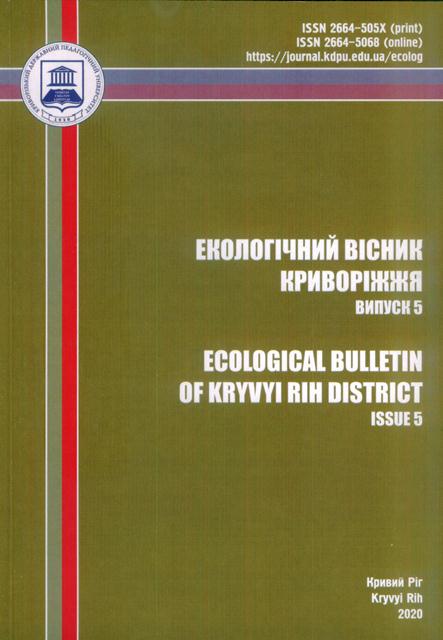МІЖНАРОДНІ ЕКОЛОГІЧНІ ПРОЕКТИ КАФЕДРИ БОТАНІКИ ТА ЕКОЛОГІЇ КРИВОРІЗЬКОГО ДЕРЖАВНОГО ПЕДАГОГІЧНОГО УНІВЕРСИТЕТУ
DOI:
https://doi.org/10.31812/eco-bulletin-krd.v5i0.4354Keywords:
збереження біорізноманіття; депозитарій «Рослини Червоної книги»; екологічна стежка «Зелений шлях»; чагарникові угруповання; Жовтокам'янський кар'єрAbstract
Мета роботи проаналізувати результати участі викладачів і співробітників кафедри ботаніки та екології Криворізького державного педагогічного університету у міжнародних екологічних проектах, які були реалізовані у ХХІ ст. Міжнародний науковий проект «Територія кар'єру як депозитарій для рідкісних рослин і основа для екологічної освіти» був виконаний в рамках програми The Quarry Life Award 2014 (організатор – «HeidelbergCement»). Під час реалізації проекту його команда (основу якої складали викладачі і співробітники кафедри ботаніки та екології) на Жовтокам'янському кар'єрі здійснила наступне: 1) провела еколого-ландшафтний аналіз території, 2) дослідила фіторізноманіття, 3) створила депозитарій «Рослини Червоної книги», 4) розробила екологічну стежку «Зелений шлях», 5) запропонувала напрямки подальшого розвитку проекту.
Реалізація міжнародного наукового проекту «Створення чагарникових угруповань як нового місця існування для біоти кар’єру» в рамках програми The Quarry Life Award 2018 (організатор – «HeidelbergCement») дозволила колективу дослідників: 1) створити окремі біогрупи з 8 гарно квітучих ранньовесняних чагарників, в тому числі хвойних, на 5 ділянках; 2) результати проекту внести до навчально-методичних матеріалів дисципліни «Біорізноманіття і стратегія сталого розвитку»; 3) провести семінари зі збереження біорізноманіття з вчителями біології та екології, учнями та студентами закладів середньої і професійно-технічної освіти; 4) рекомендувати види для фітомеліорації інших кар’єрів компанії ХайдельбергЦемент.


